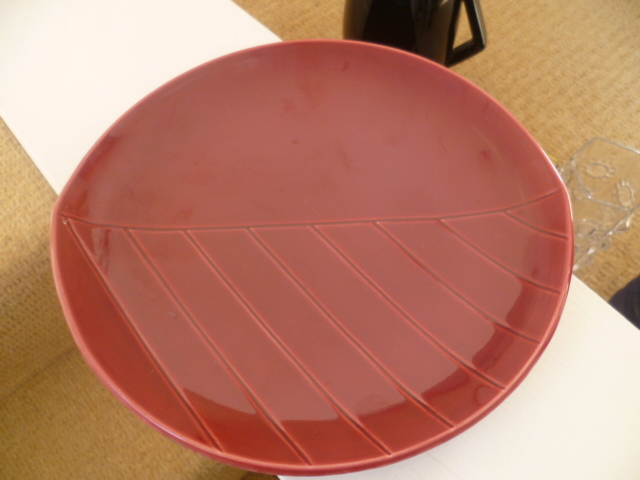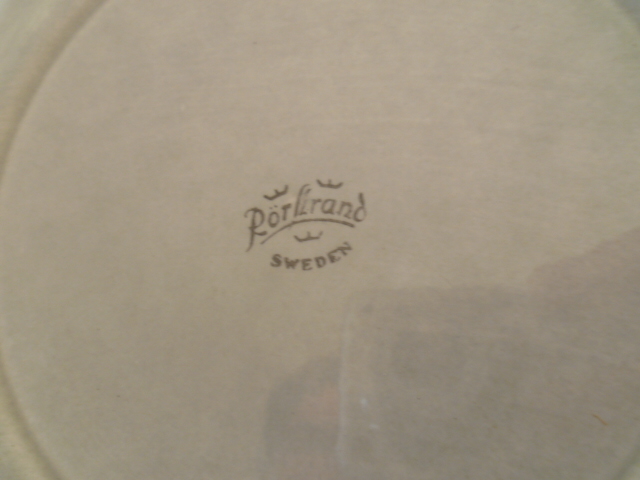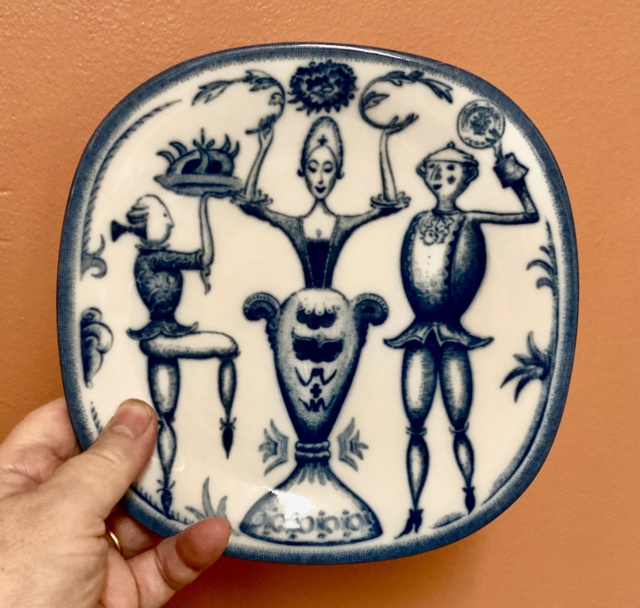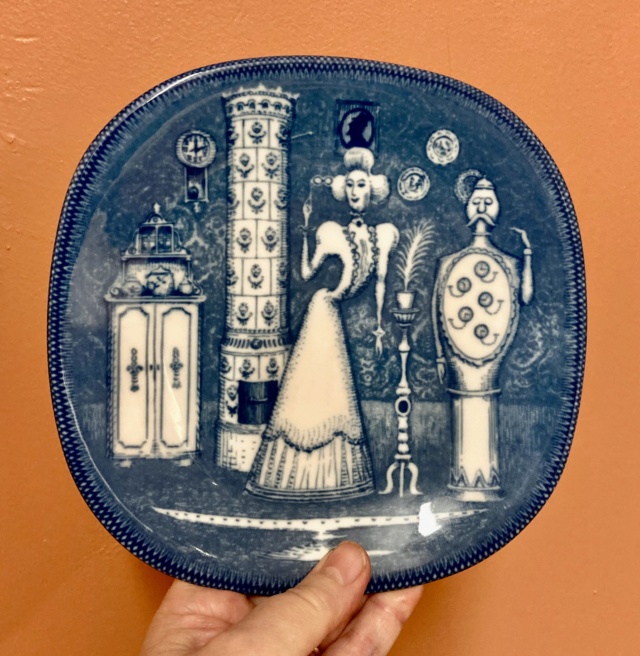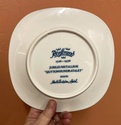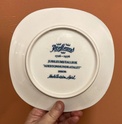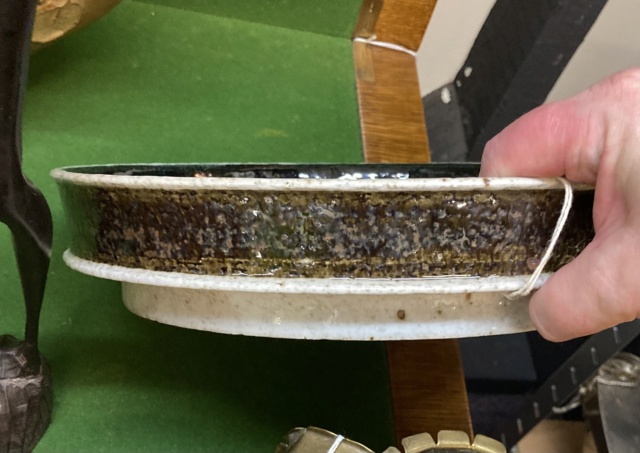Rörstrand (Sweden)
+18
wildmantel
vintagebreda
22 Crawford St.
Emil Brannstrom
denbydump
RoyJ99
styleinvasion
NaomiM
Adam20
kenkriete
kirkmodern
flying free
fianelly
dantheman
twenty21
Pip
Nic
big ed
22 posters
Page 2 of 3
Page 2 of 3 •  1, 2, 3
1, 2, 3 
 Carl Harry Stalhane
Carl Harry Stalhane
3 inch vase signed CHS
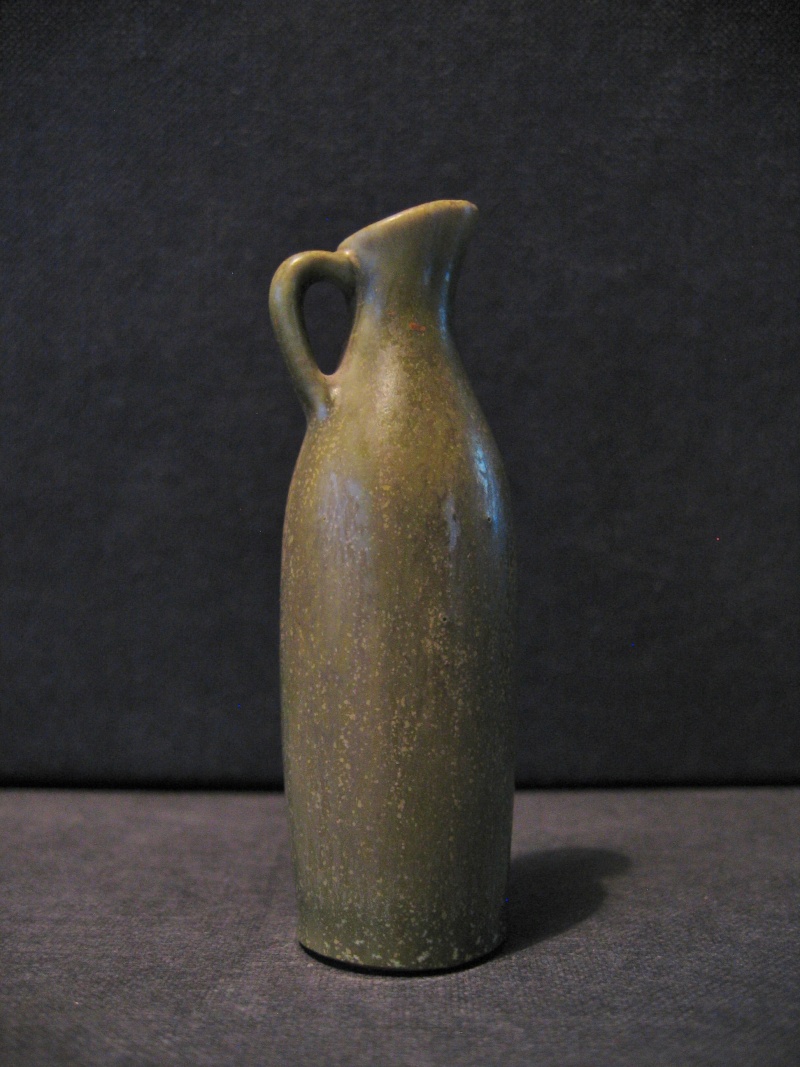

Last edited by dantheman on August 20th 2015, 4:39 pm; edited 1 time in total
_________________
'Edith Swan takes it up the Swanee and she loves it more than Christmas day.'
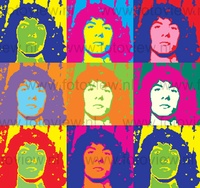
dantheman- Consultant

-
 Number of posts : 15463
Number of posts : 15463
Location : Lincolnshire ( the veg patch of England)
Registration date : 2008-02-03
 Carl Harry Stalhane
Carl Harry Stalhane
2 inch handled vase signed CHS
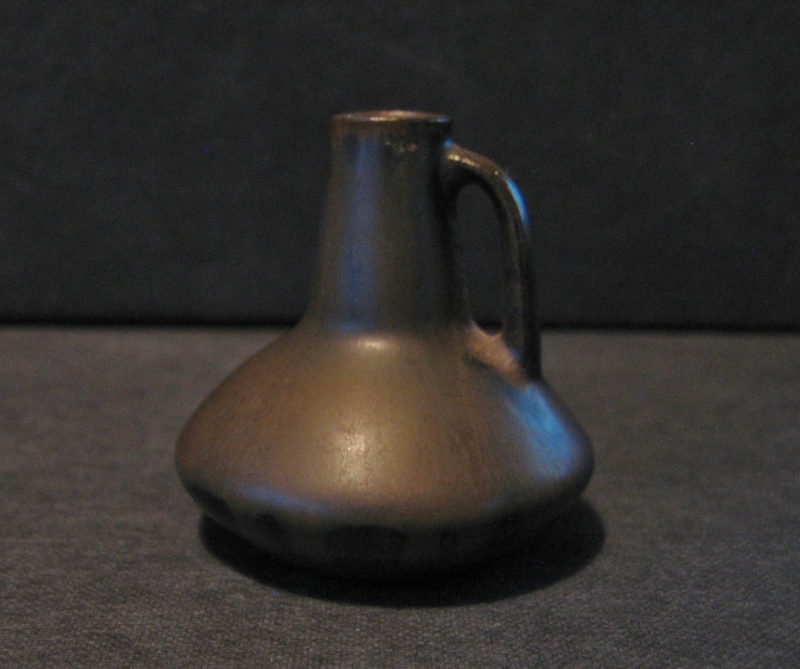

Last edited by dantheman on August 20th 2015, 4:39 pm; edited 2 times in total
_________________
'Edith Swan takes it up the Swanee and she loves it more than Christmas day.'

dantheman- Consultant

-
 Number of posts : 15463
Number of posts : 15463
Location : Lincolnshire ( the veg patch of England)
Registration date : 2008-02-03
 gunnar nylund rörstrand
gunnar nylund rörstrand
Gunnar Nylund (1904-1997) was a Swedish ceramic designer since the 1930s, best known as the artistic director of Rörstrand, was already a well-established ceramic artist in Denmark first at the Bing & Grøndahl Porcelain factory in Copenhagen 1925-28. Later, in 1928, in collaboration with chemist Nathalie Krebs, he started a ceramics workshop, which became Saxbo in 1930, which kept making his stoneware until 1932. Nylund worked for Rörstrand from 1931–1955, the majority of the time as artistic director. He became well known for his new matte feldspar glazed stoneware in hare’s fur and crystal glazes and for his stoneware animal sculptures.
Over five decades, Nylund crafted some 30 reliefs and sculptures commissioned for public spaces. Moreover, in the 1940s he was commissioned to do several freelance projects, including designing bathroom fixtures and interiors for the Swedish bathroom manufacturer Ifö. He also designed a number of products for refrigerator use. From 1955, he was artistic director for Strömbergshyttans glassworks in Hovmantorp, and later freelanced for the company. In the early 1960s, Nylund returned to Copenhagen. There he started producing stoneware for Nymölle Keramiska Fabrik in Lyngby. After a change of ownership at Rörstrand in the mid-1960s, he re-turned to Nymölle as a freelancer, producing a more industrial class type of stoneware. At this time he also created Europe’s largest stoneware fountain the “Scanisarius” in Bromölla, Sweden.Nylund was born in Paris in 1904, where his Danish mother, the artist Fernanda Jacobsen-Nylund and his Finland-Swedish father, the sculptor Felix Nylund, were studying. In 1907, the family moved to Copenhagen, moving later to Helsinki, where Nylund attended elementary school. When the Finnish civil war broke out, he moved with his mother in 1918 to Denmark and continued his studies at boarding school. Following graduation in 1923 and completing an architecture internship and studies in ceramics in Helsinki, he started studying architecture at the Royal Danish Academy of Fine Arts in Charlotteborg, Copenhagen. He became practiced in sculpture by assisting his father Felix, who encouraged him in the study of animals. Nylund did some extra work at the Bing & Grondahl Porcelain factory, designing new products for a Paris exhibition. He was then offered full-time employment by the company and as a result gave up his architecture studies. At Bing & Gröndahl, his mentor was Paul Gauguin’s son Jean. Nylund created a few thousand unique pieces at Bing & Gröndahl.
Gunnar Nylund was renowned for his revolutionary stoneware in matte glazes and novel colors, and also for the mass production that Nylund & Krebs started in the legendary Patrick Nordström’s workshop, which they later took over. Prior to a major exhibition in 1930 at Bo in Copenhagen, they launched SAXBO, a groundbreaking Nordic series of iconic stoneware, mostly undecorated in matte glazes and novel colors.
The SAXBO stoneware generated a lot of attention at a Svenskt Tenn exhibition, the same year that Nylund was recruited to Rörstrand, at that time owned by Arabia. In order to start crafting stoneware the young ceramist was moved to the company’s factory in Lidköping, which was relatively unknown at that time and which focused solely on porcelain produc-tion. There he succeeded, thanks to his own specially developed technique, to produce the first Swedish matte glazed stoneware and sculptures in shimmering colorful stoneware chamotte, which was very popular and had an important impact on modern Swedish ce-ramics. Nylund’s stoneware at that time featured Sung-inspired crackelé and oxblood glazes – pieces that ranged from monumental original sculptures in stoneware chamotte and two-feet high urns to moderately priced miniature vases and bowls. In the mid-1930s, the Chamotte was produced both in series and original sculptures. After a one year break at Bing & Gröndahl in Denmark, Rörstrand’s new chief Fredrik Wehtje managed to get Nylund to return to Lidköping in 1937. Here he designed numerous tableware series and laid the ground for all the factory’s1940s collections, featuring innovative glazes.
From the mid-1940s, Nylund devoted much of his time to reliefs and other work for the decoration of public spaces, for example the “Theater¬ Cavalcade” at the Malmö Stadsteater, “The Jungle Awakens” now found at the entrance of the library of the University of Agriculture in Uppsala, the “Three Västgöter”, relief for the Västgöta nation Uppsala, “Life in the square” for Lidköping’s Sparbank, “Our Times” relief for the Göte-borgsposten, “Symfonica” relief for the m/s Gripsholm ship, as well as alter pieces, etc., for the Lidköping crematorium, the alter of Skara cathedral and the “Thorn of Crowns”. He also created sculptures such as “St. George and the Dragon” for the National Institute of Arts and Crafts and the “Mermaid” fountain for the National Museum in Stockholm in 1943, a work that has been moved to the Rörstrand museum in Lidköping, where other reliefs such as “The oven is empty” are found.
Most of Nylund’s original sculptures in stoneware chamotte ended up in museums, as did much of his other work. For example the impressive “Lion Head” is found at the National Museum in Stockholm, “Blue Bird” is at the Sèvres museum in Paris, his antelope head “Abyssinian mountain nyala”, is at the Röhsska museet in Gothenburg and the “Hamadryas Baboon” is at the Malmö Museum. The museum in Riga is home to the ”Magnus Gabriel de la Gardie”, and the Danish Museum of Art & Design houses the “Hannover” portrait, among other works. His piece “Bulls head in oxblood” was bought by the Ateneum museum in Helsinki. And a lot of his other work can be found at other museums around the world.
Gunnar Nylund’s work and a number of his many tableware collections and kitchen series are included in most reference books on 20th century ceramics. However, such information contains inaccuracies, which is why he has elected to publish his memoires. In the book he tells of his life and most of his work in conversation with his daughter Bie Nylund. The book also contains press clippings as well as a lot of photographs cataloging Nylund’s great collections primarily from his half century with Rörstrand as well as his other activities, even after 1970 - as a pensioner with a workshop in Lomma, Sweden. He describes the many exhibitions he designed and arranged. The book is expected to be published at the end of 2012/early 2013 in conjunction with the anniversary of his most important Swedish exhibitions: Gallerie Moderne in Stockholm, Röhsska museum in Gothenburg 1932-33 and the chamotte exhibition in the mid-1930s, and the hugely successful exhibition “Rörstrand through three centuries” at the National Museum in Stockholm 1943
Over five decades, Nylund crafted some 30 reliefs and sculptures commissioned for public spaces. Moreover, in the 1940s he was commissioned to do several freelance projects, including designing bathroom fixtures and interiors for the Swedish bathroom manufacturer Ifö. He also designed a number of products for refrigerator use. From 1955, he was artistic director for Strömbergshyttans glassworks in Hovmantorp, and later freelanced for the company. In the early 1960s, Nylund returned to Copenhagen. There he started producing stoneware for Nymölle Keramiska Fabrik in Lyngby. After a change of ownership at Rörstrand in the mid-1960s, he re-turned to Nymölle as a freelancer, producing a more industrial class type of stoneware. At this time he also created Europe’s largest stoneware fountain the “Scanisarius” in Bromölla, Sweden.Nylund was born in Paris in 1904, where his Danish mother, the artist Fernanda Jacobsen-Nylund and his Finland-Swedish father, the sculptor Felix Nylund, were studying. In 1907, the family moved to Copenhagen, moving later to Helsinki, where Nylund attended elementary school. When the Finnish civil war broke out, he moved with his mother in 1918 to Denmark and continued his studies at boarding school. Following graduation in 1923 and completing an architecture internship and studies in ceramics in Helsinki, he started studying architecture at the Royal Danish Academy of Fine Arts in Charlotteborg, Copenhagen. He became practiced in sculpture by assisting his father Felix, who encouraged him in the study of animals. Nylund did some extra work at the Bing & Grondahl Porcelain factory, designing new products for a Paris exhibition. He was then offered full-time employment by the company and as a result gave up his architecture studies. At Bing & Gröndahl, his mentor was Paul Gauguin’s son Jean. Nylund created a few thousand unique pieces at Bing & Gröndahl.
Gunnar Nylund was renowned for his revolutionary stoneware in matte glazes and novel colors, and also for the mass production that Nylund & Krebs started in the legendary Patrick Nordström’s workshop, which they later took over. Prior to a major exhibition in 1930 at Bo in Copenhagen, they launched SAXBO, a groundbreaking Nordic series of iconic stoneware, mostly undecorated in matte glazes and novel colors.
The SAXBO stoneware generated a lot of attention at a Svenskt Tenn exhibition, the same year that Nylund was recruited to Rörstrand, at that time owned by Arabia. In order to start crafting stoneware the young ceramist was moved to the company’s factory in Lidköping, which was relatively unknown at that time and which focused solely on porcelain produc-tion. There he succeeded, thanks to his own specially developed technique, to produce the first Swedish matte glazed stoneware and sculptures in shimmering colorful stoneware chamotte, which was very popular and had an important impact on modern Swedish ce-ramics. Nylund’s stoneware at that time featured Sung-inspired crackelé and oxblood glazes – pieces that ranged from monumental original sculptures in stoneware chamotte and two-feet high urns to moderately priced miniature vases and bowls. In the mid-1930s, the Chamotte was produced both in series and original sculptures. After a one year break at Bing & Gröndahl in Denmark, Rörstrand’s new chief Fredrik Wehtje managed to get Nylund to return to Lidköping in 1937. Here he designed numerous tableware series and laid the ground for all the factory’s1940s collections, featuring innovative glazes.
From the mid-1940s, Nylund devoted much of his time to reliefs and other work for the decoration of public spaces, for example the “Theater¬ Cavalcade” at the Malmö Stadsteater, “The Jungle Awakens” now found at the entrance of the library of the University of Agriculture in Uppsala, the “Three Västgöter”, relief for the Västgöta nation Uppsala, “Life in the square” for Lidköping’s Sparbank, “Our Times” relief for the Göte-borgsposten, “Symfonica” relief for the m/s Gripsholm ship, as well as alter pieces, etc., for the Lidköping crematorium, the alter of Skara cathedral and the “Thorn of Crowns”. He also created sculptures such as “St. George and the Dragon” for the National Institute of Arts and Crafts and the “Mermaid” fountain for the National Museum in Stockholm in 1943, a work that has been moved to the Rörstrand museum in Lidköping, where other reliefs such as “The oven is empty” are found.
Most of Nylund’s original sculptures in stoneware chamotte ended up in museums, as did much of his other work. For example the impressive “Lion Head” is found at the National Museum in Stockholm, “Blue Bird” is at the Sèvres museum in Paris, his antelope head “Abyssinian mountain nyala”, is at the Röhsska museet in Gothenburg and the “Hamadryas Baboon” is at the Malmö Museum. The museum in Riga is home to the ”Magnus Gabriel de la Gardie”, and the Danish Museum of Art & Design houses the “Hannover” portrait, among other works. His piece “Bulls head in oxblood” was bought by the Ateneum museum in Helsinki. And a lot of his other work can be found at other museums around the world.
Gunnar Nylund’s work and a number of his many tableware collections and kitchen series are included in most reference books on 20th century ceramics. However, such information contains inaccuracies, which is why he has elected to publish his memoires. In the book he tells of his life and most of his work in conversation with his daughter Bie Nylund. The book also contains press clippings as well as a lot of photographs cataloging Nylund’s great collections primarily from his half century with Rörstrand as well as his other activities, even after 1970 - as a pensioner with a workshop in Lomma, Sweden. He describes the many exhibitions he designed and arranged. The book is expected to be published at the end of 2012/early 2013 in conjunction with the anniversary of his most important Swedish exhibitions: Gallerie Moderne in Stockholm, Röhsska museum in Gothenburg 1932-33 and the chamotte exhibition in the mid-1930s, and the hugely successful exhibition “Rörstrand through three centuries” at the National Museum in Stockholm 1943
Last edited by dantheman on August 20th 2015, 8:50 pm; edited 4 times in total
_________________
'Edith Swan takes it up the Swanee and she loves it more than Christmas day.'

dantheman- Consultant

-
 Number of posts : 15463
Number of posts : 15463
Location : Lincolnshire ( the veg patch of England)
Registration date : 2008-02-03
 Rörstrand Sweden vase
Rörstrand Sweden vase
Rörstrand Sweden vase
Marked on the bottom as: NOHAB and the Rörstrand Sweden stamp with the 3 crowns.
Size: 22cm high x 7cm wide on the base.



Marked on the bottom as: NOHAB and the Rörstrand Sweden stamp with the 3 crowns.
Size: 22cm high x 7cm wide on the base.



 Re: Rörstrand (Sweden)
Re: Rörstrand (Sweden)
Interesting. Seems NOHAB was an engineering firm, so this could have been a commission.
NOHAB (actually Nydqvist & Holm AB, from 1974 AB Bofors Nohab) was an engineering company in Trollhättan founded in 1847 under the name of Trollhättan Mechanical Workshop of Antenor Nydqvist ,
_________________
Carrot cake is just fake cake
 C.H.Stalhane Sweden
C.H.Stalhane Sweden
Hi, I thought I would share this before it goes to a new home. It is to heavy for me now and I do not want to see it damaged.


" />
The vase is 13" or 33cm high, weighs just short of 2 kilos and is signed on the base. C.H.Stalhane Sweden The mark for Rorstand and the number 61.

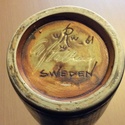 " />
" />

" />
The vase is 13" or 33cm high, weighs just short of 2 kilos and is signed on the base. C.H.Stalhane Sweden The mark for Rorstand and the number 61.
 " />
" />Last edited by wildmantel on February 14th 2016, 2:09 pm; edited 1 time in total
 Re: Rörstrand (Sweden)
Re: Rörstrand (Sweden)
Just got this. A lovely miniature Rorstrand vase by Bertil Lundgren. This dates to the 1970s


 Re: Rörstrand (Sweden)
Re: Rörstrand (Sweden)
A unique vase by Carl-Harry Stalhane with beautiful haresfur glaze. All unique vases he produced have his signature on the base. This one dates to 1955.




 Re: Rörstrand (Sweden)
Re: Rörstrand (Sweden)
ooh that's a lovely example of his design
_________________
'Edith Swan takes it up the Swanee and she loves it more than Christmas day.'

dantheman- Consultant

-
 Number of posts : 15463
Number of posts : 15463
Location : Lincolnshire ( the veg patch of England)
Registration date : 2008-02-03
 Re: Rörstrand (Sweden)
Re: Rörstrand (Sweden)
There are three classes of design that Stalhane did for Rorstrand:
- production pieces (designed by him made by others in the Rorstrand studio), these have the Rorstrand mark, his initials CHS and a model/shape code (three letters)
- limited edition pieces designed by Stalhane and made in short production runs. As well as the Rorstrand mark and his initials they are also marked Atelje
- unique pieces made by the man himself, they have the Rorstand mark, his signature, a date and a unique model number.
- production pieces (designed by him made by others in the Rorstrand studio), these have the Rorstrand mark, his initials CHS and a model/shape code (three letters)
- limited edition pieces designed by Stalhane and made in short production runs. As well as the Rorstrand mark and his initials they are also marked Atelje
- unique pieces made by the man himself, they have the Rorstand mark, his signature, a date and a unique model number.
 Re: Rörstrand (Sweden)
Re: Rörstrand (Sweden)
Here are a couple of Gunnar Nylund vases for Rorstrand in the flambe range from the 1930s
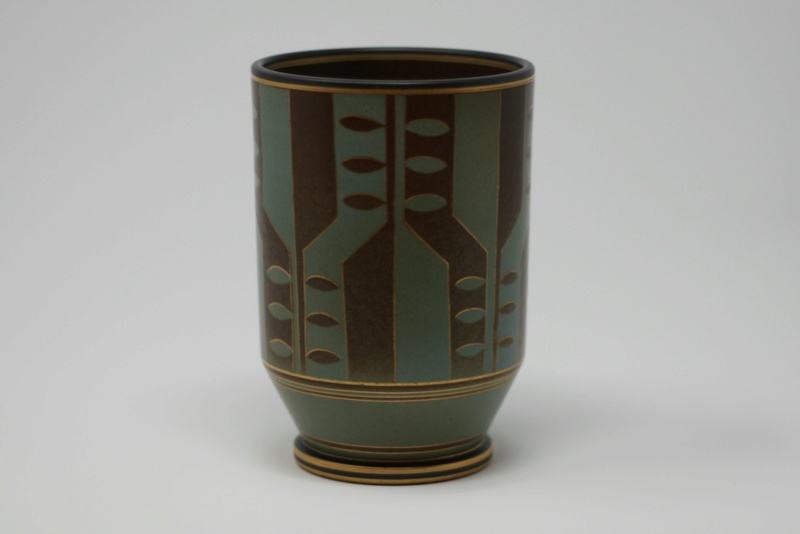
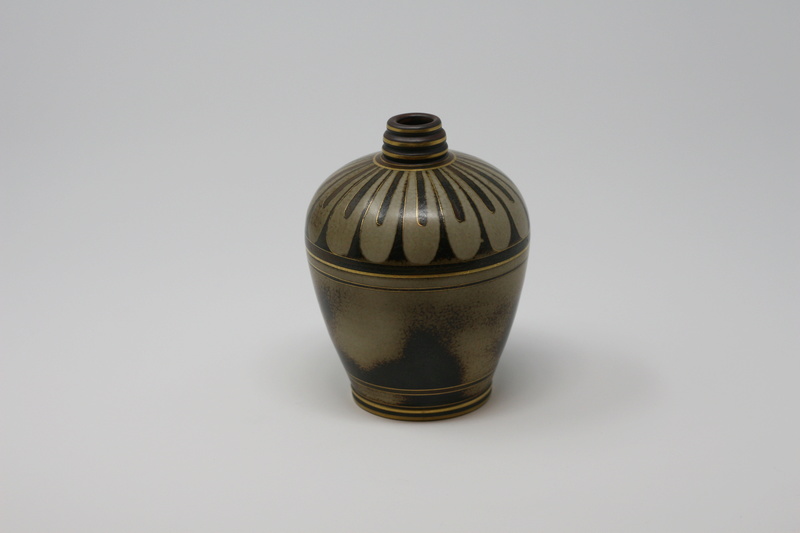



RVsaid- Number of posts : 1470
Location : Torbay, England
Registration date : 2012-08-12
 Re: Rörstrand (Sweden)
Re: Rörstrand (Sweden)
Found this one: https://www.worthpoint.com/worthopedia/rorstrand-sweden-california-plate-482579051
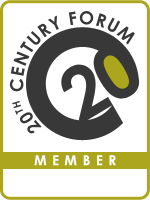
janetpjohn- Number of posts : 295
Location : Louisiana
Registration date : 2015-03-16
 Re: Rörstrand (Sweden)
Re: Rörstrand (Sweden)
Hey that's great thanks. The California range have a more bowl form and has the grey, seen on the back of this one on the front in a two tone but it's certainly close. Much appreciated

RVsaid- Number of posts : 1470
Location : Torbay, England
Registration date : 2012-08-12
 Re: Rörstrand (Sweden)
Re: Rörstrand (Sweden)
Nice, never seen those designs before. Almost Parkinson or Fornasetti.
Can't quite make out the name unfortunately.
Can't quite make out the name unfortunately.
 Re: Rörstrand (Sweden)
Re: Rörstrand (Sweden)
jubileumstallrik
Signed Niels Christian Hald
Signed Niels Christian Hald
_________________
Carrot cake is just fake cake
 Re: Rörstrand (Sweden)
Re: Rörstrand (Sweden)
Nice, Atelje means studio so it's in between the production standard ware and artist marked pieces
Edit: Don't think it's worth 155.
Edit: Don't think it's worth 155.

 Re: Rörstrand (Sweden)
Re: Rörstrand (Sweden)
22 Crawford St. wrote:
Edit: Don't think it's worth 155.
No, me neither.

_________________
Carrot cake is just fake cake

philpot- Number of posts : 6691
Location : cambridge
Registration date : 2010-11-06
Page 2 of 3 •  1, 2, 3
1, 2, 3 
Page 2 of 3
Permissions in this forum:
You cannot reply to topics in this forum



